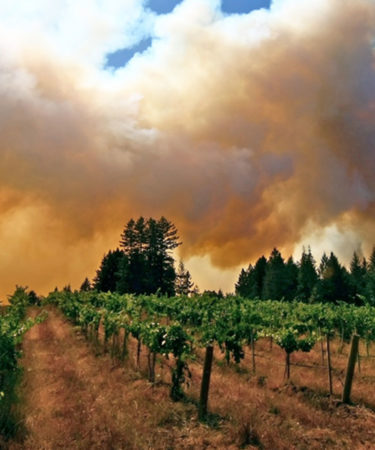What does smoke taint taste like?
Ever since California wine country has been sadly plagued by wildfires, this is a question that has gotten asked more and more. Before answering what smoke taint in wine can taste like, it’s important to remember that the wine is most impacted if the smoke occurs while the grapes still hang on the vines in the vineyard. This is the time when the grapes are most susceptible to absorbing the smoke and imparting the nasty flavors in the wine that we’ll discuss more below. If the grapes have already been crushed and the wine has been made and it’s sitting in tank, barrel, or bottle, the likelihood of smoke taint is much lower.
When grapes in the vineyard are exposed to smoke, the resulting wine can exhibit undesirable flavors such as burnt bacon, wet ashtray, a smoldering fire, or simply a smell you’d characterize as being “ashy.” Unfortunately, a winemaker doesn’t know how badly their wines will be affected by smoke taint until after fermentation, as the process of fermentation is what causes these flavors to come out of the grapes after they’ve absorbed smoke. Prior to this there can be no perceivable smoky flavor in the fresh grapes, which is what causes making wine after a fire to be so challenging.
Is lactose the same thing as milk sugar?
If you’ve been drinking a lot of hazy milkshake IPAs lately, you’ve probably seen beers that say they have been brewed with lactose or milk sugar, which are exactly the same thing. Lactose is a naturally occurring sugar in milk, which is what gives it the slightly sweet taste. It is considered a healthy sugar that is beneficial to the body, and in beer, because it is a hard sugar to ferment, it instead adds body, sweetness, and, of course, some calories.
Have a wine, beer or spirits question for Adam? Email him at [email protected]
